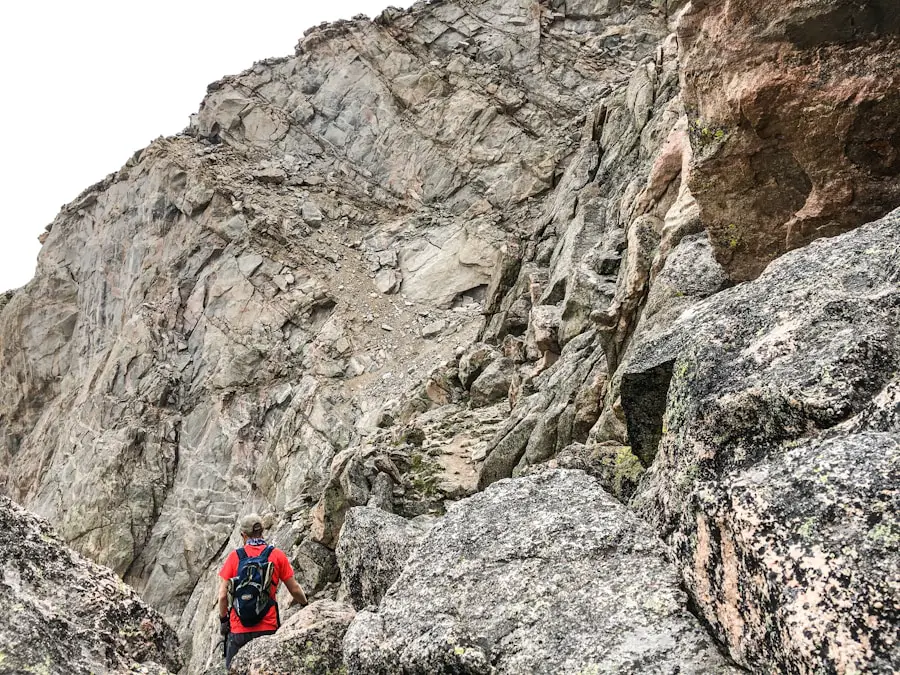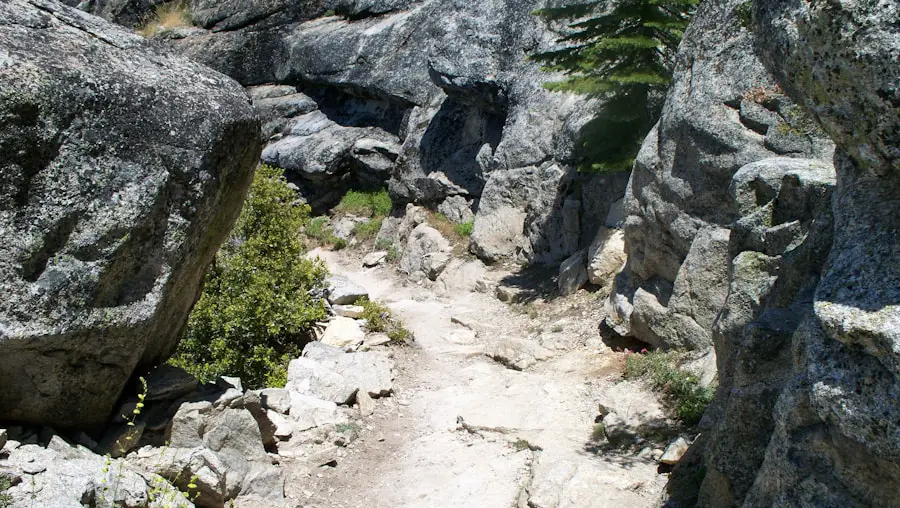Hiking scrambling is a unique blend of hiking and climbing that requires a certain level of skill, physical fitness, and mental fortitude. Unlike traditional hiking, which typically involves well-defined trails and moderate elevation changes, scrambling often takes place on rugged, unmarked terrain where the path is less clear. This activity can range from simple rock hopping to more technical ascents that may require the use of hands for balance and support.
Scrambling can be found in various environments, from rocky mountain ranges to coastal cliffs, and it often presents hikers with challenges that test their agility and problem-solving abilities. The essence of scrambling lies in its unpredictability. While some scrambles may be straightforward, others can present significant obstacles such as steep rock faces, loose gravel, or narrow ledges.
Understanding the basics of scrambling involves recognizing the difference between hiking and climbing; while both activities require physical exertion, scrambling often demands a more dynamic approach to movement. Hikers must be prepared to assess their surroundings continuously, making quick decisions about the best routes to take while considering their own skill level and comfort with exposure. This adaptability is crucial for navigating the diverse landscapes that scramblers encounter.
Key Takeaways
- Hiking scrambling involves navigating steep and rugged terrain, often requiring the use of hands for balance and support.
- Proper gear for steep terrain includes sturdy hiking boots, a helmet, and a harness for added safety during scrambling.
- Route finding in steep terrain requires careful observation of the surroundings and the ability to read topographical maps and use a compass.
- Navigating steep terrain safely involves using proper techniques for ascending and descending, as well as being aware of potential hazards such as loose rocks and unstable ground.
- Building strength and endurance through regular exercise and training can greatly improve performance and safety during hiking scrambles.
Choosing the Right Gear for Steep Terrain
Selecting appropriate gear is paramount when preparing for a hiking scramble. The right equipment not only enhances performance but also ensures safety in challenging conditions. Footwear is one of the most critical components; sturdy hiking boots with excellent grip and ankle support are essential for navigating uneven surfaces.
Many scramblers opt for shoes with a Vibram sole, which provides superior traction on rocky terrain. Additionally, a well-fitted pair of boots can help prevent injuries such as sprains or blisters, which can be exacerbated by the demands of scrambling. Beyond footwear, other gear considerations include clothing that allows for freedom of movement while providing protection from the elements.
Lightweight, moisture-wicking fabrics are ideal for maintaining comfort during strenuous activity. Layering is also important; a base layer can wick away sweat, an insulating layer can provide warmth, and an outer shell can protect against wind and rain. Furthermore, carrying essential items such as a helmet can be crucial in areas where rockfall is a risk.
A well-stocked backpack should also include navigation tools like maps and compasses, first aid supplies, and hydration systems to ensure that scramblers are prepared for any situation they may encounter.
Mastering the Art of Route Finding

Route finding is a fundamental skill in scrambling that separates experienced adventurers from novices. Unlike marked trails, scrambles often require hikers to navigate through complex landscapes where the best path may not be immediately obvious. Developing this skill involves a combination of observation, intuition, and experience.
Scramblers must learn to read the terrain, identifying features such as rock formations, vegetation patterns, and elevation changes that can guide their decisions. Familiarity with topographic maps and GPS technology can also enhance route-finding capabilities. One effective strategy for mastering route finding is to practice on less challenging scrambles before tackling more technical routes.
This allows individuals to build confidence in their decision-making abilities while honing their skills in assessing terrain features. Additionally, studying trip reports or engaging with local hiking communities can provide valuable insights into potential routes and hazards. As scramblers gain experience, they develop an instinct for recognizing safe passages and understanding when to alter their course in response to changing conditions or unexpected obstacles.
Navigating Steep Terrain Safely
| Metrics | 2019 | 2020 | 2021 |
|---|---|---|---|
| Number of reported accidents | 15 | 12 | 10 |
| Percentage of accidents on steep terrain | 40% | 35% | 30% |
| Number of safety training sessions conducted | 20 | 25 | 30 |
| Percentage of employees completing safety training | 85% | 90% | 95% |
Safety is paramount when navigating steep terrain during a scramble. The risks associated with steep ascents or descents can be significant, including falls or injuries from loose rocks. To mitigate these dangers, scramblers should adopt specific techniques that enhance stability and control.
For instance, using a three-point contact method—where two hands and one foot (or two feet and one hand) are in contact with the ground—can provide greater balance on precarious surfaces. This technique allows individuals to distribute their weight more evenly while maintaining a secure grip on the terrain. In addition to employing proper techniques, awareness of environmental factors is crucial for safe navigation.
Weather conditions can dramatically affect the safety of a scramble; rain can make rocks slippery, while high winds can impact balance on exposed ridges. Scramblers should always check weather forecasts before embarking on their journey and be prepared to turn back if conditions deteriorate. Furthermore, understanding the terrain itself—such as identifying areas prone to rockfall or loose gravel—can help individuals make informed decisions about their route and pace.
Building Strength and Endurance for Hiking Scrambles
Physical fitness plays a vital role in successfully completing hiking scrambles. Building strength and endurance is essential not only for tackling steep ascents but also for maintaining energy levels throughout the journey. A well-rounded fitness regimen should include cardiovascular training to improve stamina, strength training to enhance muscle power, and flexibility exercises to promote agility and prevent injuries.
Activities such as running, cycling, or swimming can boost cardiovascular health, while weightlifting or bodyweight exercises like squats and lunges can develop the necessary strength for climbing. Incorporating specific training exercises that mimic scrambling movements can also be beneficial. For example, practicing climbing techniques on boulders or steep hills can help build the muscle groups most engaged during scrambles.
Additionally, engaging in activities like yoga or Pilates can improve core strength and balance—both critical components for navigating uneven terrain effectively. By committing to a consistent training routine that targets these areas, aspiring scramblers can enhance their physical capabilities and increase their confidence when faced with challenging routes.
Tips for Maintaining Balance and Stability on Steep Terrain

Maintaining balance and stability on steep terrain is crucial for preventing falls and ensuring a successful scramble. One effective technique is to focus on foot placement; choosing stable footholds and distributing weight evenly can significantly enhance stability. Scramblers should aim to place their feet on solid surfaces rather than loose rocks or gravel whenever possible.
Additionally, keeping a low center of gravity by bending the knees slightly can help maintain balance during challenging maneuvers. Another important aspect of stability is body positioning. Engaging the core muscles not only supports overall balance but also provides additional strength during climbs or descents.
Scramblers should practice shifting their weight smoothly between feet while using their hands for support when necessary. This dynamic movement allows individuals to adapt quickly to changes in terrain while minimizing the risk of losing balance. Furthermore, taking deliberate pauses to reassess footing and surroundings can help maintain composure during particularly tricky sections of a scramble.
Overcoming Fear and Mental Challenges during Hiking Scrambles
The mental aspect of scrambling is often as challenging as the physical demands it presents. Many individuals experience fear or anxiety when faced with steep drops or exposed ledges, which can hinder their ability to navigate effectively. Overcoming these mental challenges requires a combination of preparation, self-awareness, and positive reinforcement.
One effective strategy is visualization; by mentally rehearsing successful navigation through difficult sections before attempting them physically, scramblers can build confidence in their abilities. Additionally, breaking down the scramble into smaller segments can make daunting challenges feel more manageable. Focusing on one step at a time rather than fixating on the overall ascent allows individuals to concentrate on their immediate surroundings and actions.
Practicing mindfulness techniques—such as deep breathing or grounding exercises—can also help alleviate anxiety during particularly stressful moments on the trail. By cultivating a positive mindset and developing coping strategies for fear, scramblers can enhance their overall experience and enjoyment of the activity.
Knowing When to Seek Professional Guidance for Hiking Scrambles
While many individuals may feel confident tackling scrambles independently, there are times when seeking professional guidance is advisable. For those new to scrambling or unfamiliar with specific terrains, hiring a guide can provide invaluable insights into safe practices and effective techniques. Professional guides possess extensive knowledge of local routes, potential hazards, and environmental conditions that may not be apparent to inexperienced scramblers.
Additionally, participating in guided group scrambles offers opportunities for learning from others while benefiting from shared experiences. This collaborative environment fosters camaraderie among participants while allowing individuals to observe different approaches to navigation and problem-solving in real-time. Ultimately, recognizing one’s limitations and understanding when to seek assistance is an essential aspect of responsible outdoor exploration that enhances both safety and enjoyment during hiking scrambles.
If you’re planning a multi-day trek and need a reliable hiking backpack, you should check out this article on the best hiking backpack for multi-day trek. It’s important to have the right gear when embarking on a challenging hike, including understanding techniques like a scramble. This article will help you prepare for your adventure and ensure you have everything you need for a successful trip.
Love travel? Join Our Facebook Community For More Tips.
FAQs
What is a scramble in hiking?
A scramble in hiking refers to a section of a trail that requires the use of hands as well as feet to navigate steep or rocky terrain. It is more challenging than a regular hike but does not require technical climbing equipment.
How is a scramble different from regular hiking?
Scrambling involves steeper and more rugged terrain than regular hiking. It often requires using hands to pull oneself up and over obstacles, and may involve exposure to heights.
What skills are needed for scrambling?
Scrambling requires good balance, agility, and the ability to assess and navigate difficult terrain. Basic rock climbing and route-finding skills are also helpful.
What equipment is needed for scrambling?
While technical climbing equipment is not usually necessary for scrambling, sturdy hiking boots with good grip are essential. Some hikers may also choose to use a helmet for added protection.
What are some popular scrambling routes?
Popular scrambling routes can be found in mountainous areas such as the Scottish Highlands, the Lake District in England, and the Rocky Mountains in the United States. Some well-known routes include Striding Edge in the Lake District and the Aonach Eagach ridge in Scotland.
